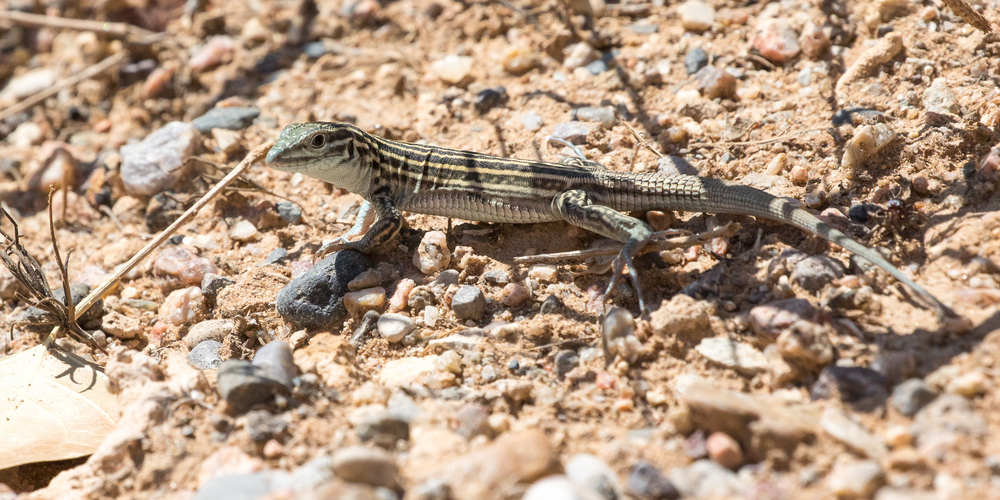
The New Mexico Whiptail (Cnemidophorus neomexianus) was first recognized by science from a specimen collected in Socorro County in 1947. It became the official state reptile when Governor Bill Richardson signed HB 13 on April 6, 2003.
This 7-striped whiptail is identified by having a wavy vertebral stripe with spots on the sides between the lighter stripes. The tail is gray at the base occurring as greenish to greenish blue toward the tip. The underside of the animal is white to pale blue.
It occurs mostly in the Rio Grande Valley from Espanola south to Presidio County, Texas, into adjacent Mexico and in the southwestern part of the state to western Hidalgo County. It also occurs in the Tularosa Basin. New Mexico Whiptail prefer disturbed riverside habitats and desert-grassland areas.
This species is active during the day, often retreating from the heat from noon until mid-afternoon during periods of high temperatures. They hibernate but are active from mid-March through mid-October. New Mexico Whiptail feed heavily on moths, butterflies, beetles, insect larvae, grasshoppers and ants. They hunt in short, jerky movements but can move rapidly in pursuit of prey or to avoid being eaten.
